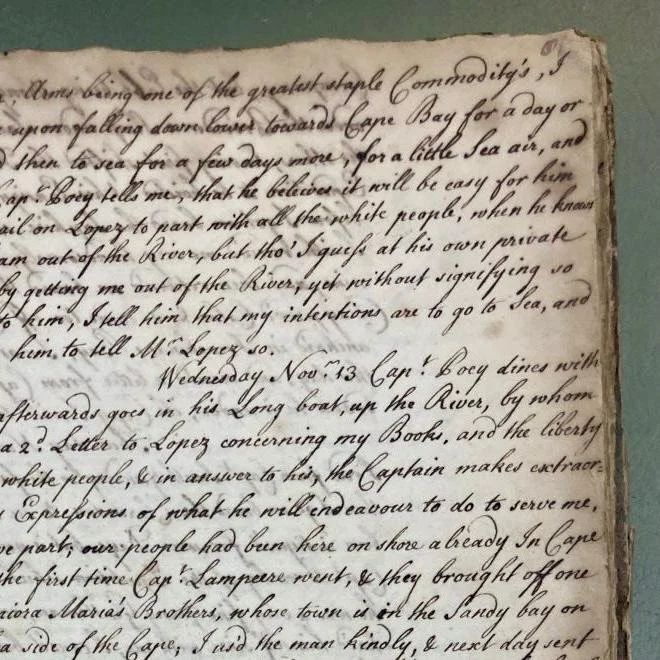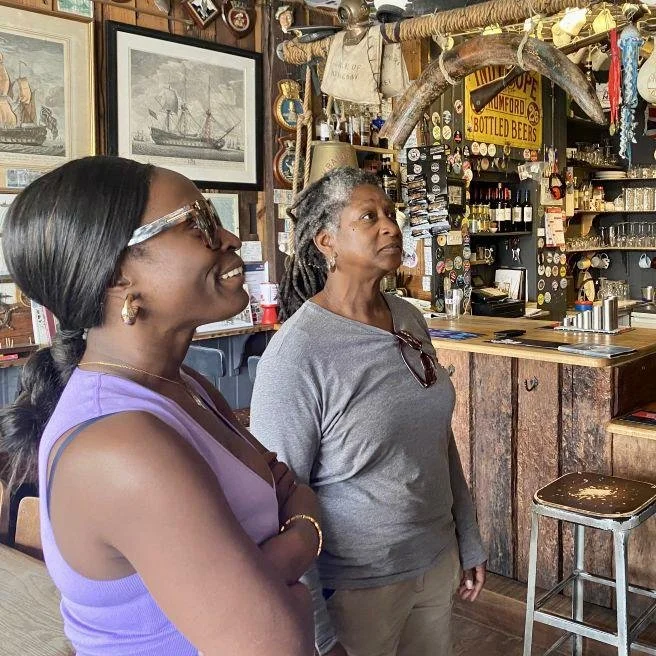Reclaiming Our Histories: The Thames Estuary Sunken Slave Ships Project
Beneath the waters off Margate's coast lie forgotten histories. The Thames Estuary Sunken Slave Ships Project is a groundbreaking community-led initiative uncovering stories of slave ships that still lie on the seabed along the waterways to London; vessels that once trafficked enslaved people across oceans, their submerged holds now remaining as sacred sites of ancestral memory.
A Journey Born from Personal Discovery
The project began with Peter Nicholls, a historian and artist who grew up in Margate. After dropping an all-European school history age 13, he began an independent research journey that led to the place of his roots - the Seychelles: mid oceanic islands that began life as a recovery station for slave ships. Historians there taught him to navigate archival documents - many still held by Britain, the former coloniser.
While conducting research that would eventually become a PhD on the Seychelles’ origins, Peter made an unexpected find: archival records of a slave ship sunk near his hometown. This revelation sparked a focused search that has since uncovered records relating to 12 slave ships and over 40 wrecks carrying sugar, cotton, ginger, and other material histories of enslaved ancestors in former colonies - all sunk in the estuary waters.
Community-Centered Resistance
In 2021, Peter shared his findings with People Dem Collective. This collaboration transformed an individual research journey into a collective mission of remembrance, care, and resistance.
“The project asks profound questions: What does it mean for communities to live in proximity to these ancestral traces? How can we repair connections through our own handling of history?”
The initiative deliberately centres community voices and lived experiences, recognising that descendants who live, swim, and organise along this coast have the right to uncover and hold this history on their own terms.
Breaking the Silence of Erasure
While many other Margate wrecks are commemorated through statues, plaques, and museum exhibits, the slave ships have remained completely unknown - a continuation of systemic erasure that has silenced names, cultures, lives, and histories. This erasure persists in education and heritage practices that deny marginalised communities agency in handling their own stories.
The project directly challenges harmful representations like J.M.W. Turner's "Slavers Throwing Overboard the Dead and Dying", which he painted while living in Margate and depicts enslaved people as faceless bodies drowning and being consumed by sharks. Instead, the project seeks to honour the humanity and resistance of those who were trafficked, using creativity and imagination to address erasure and exclusion within the documents and beyond.
Sacred Waters and Ancestral Memory
For the project team and many others, these wrecks are more than historical artefacts - they are sacred places where lives ended without proper rites, preventing souls from becoming ancestors or maintaining connections to living descendants. The initiative approaches these sites with reverence, recognising the ocean as both spiritual realm and archive.
Memorial inscription for those trafficked over the sea and lost beneath it, Réunion Island.
Many diaspora traditions hold that memory lives in saltwater. By hounoring those who passed aboard these ships as adopted ancestors, the project begins to repair what was broken, connecting across time through ancestral ways of knowing and new rituals of care.
Creative Community Responses
True to traditions of carrying history through creativity and community, the project has sparked diverse artistic responses: music collaborations, street murals, sound art, exhibitions featuring historic materials, film and original sculptures, and community rituals at the water's edge. Stories and rememberings have been shared through talks and events with Turner Contemporary, Ramsgate Maritime Museum, and other cultural institutions.
Entering the Water
The physical search for these vessels is just beginning. Thanks to James Hynes - the first person of Black heritage to join Margate Sailing Club in its 100-year history - the team has started exploring by boat using digital navigation technology that maps unidentified debris on the seabed. They've connected with marine archaeologists, diving groups, museums and local salvagers holding material wreckage from this era, including African elephant tusks that have washed ashore.
Peter and James on the water
Some team members have begun self-funded scuba training to prepare for underwater searches.
Moving Forward
Though the project continues seeking funding and support, it currently operates on passion and people power alone. Future plans include offering scuba training to community members, supporting Peter's ongoing research, and generating artworks and creative projects that handle these histories with care and respect.
The Thames Estuary Sunken Slave Ships Project represents more than historical recovery - it's an act of reclamation, repair, and resistance. By centring community voices and approaching these sacred waters with reverence, it offers a model for how marginalised communities can take ownership of their histories and honour their ancestors on their own terms.
The project is currently unfunded and relies entirely on community support and volunteer efforts. If you’re interested in getting involved you can connect through community talks and workshops planned for the future. If you’d like to donate to the project you can do so here.
For our upcoming events, follow PDC on instagram.
Artwork credits: Mural by Catherine Chinatree, film by James Jordan Johnson, sculptures by Christina Peake, installations by Peter Nicholls and Victoria Barrow-Williams.
You can contact Peter via his website, here.















